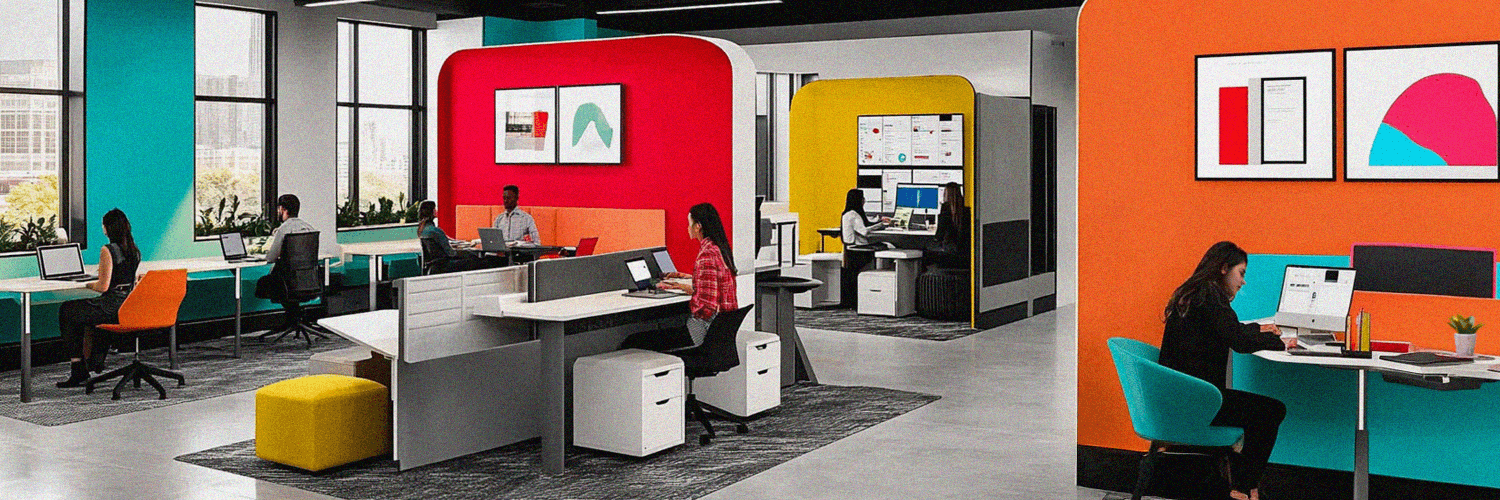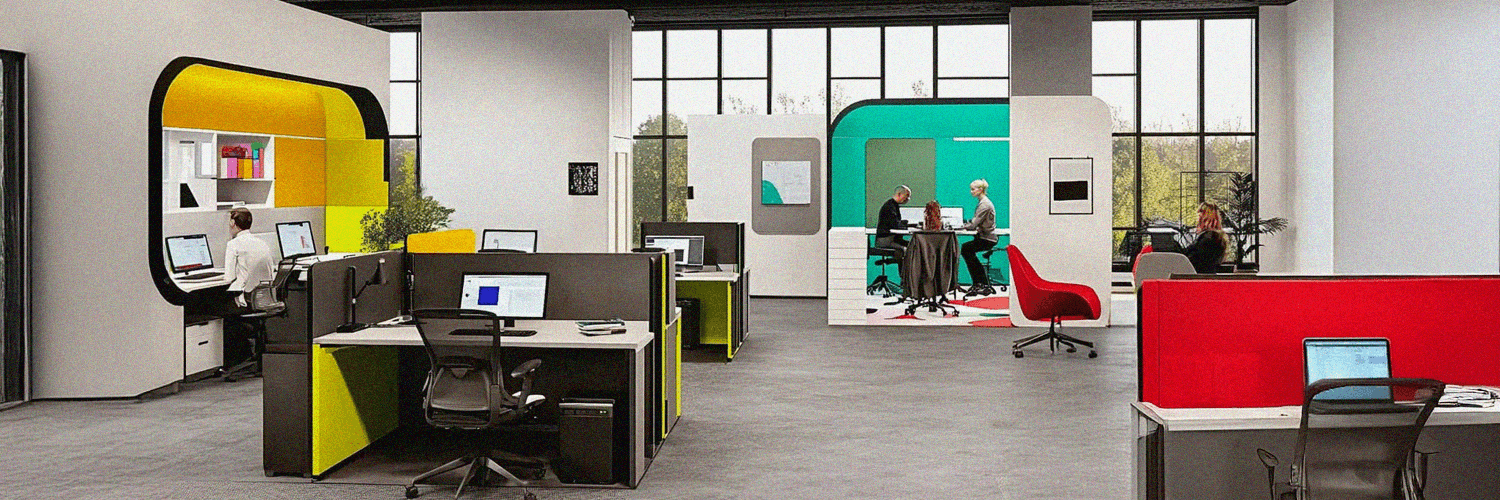The public sector has long been seen as less prone to adopt new workplace technology and methods. With the pandemic forcing everyone except essential workers to work at home, however, the public sector had to find ways to quickly align to working policies that had been used in the private sector for some time.
What is the future of work for public sector organizations now, though?
Read on and find out more.
What Comes under a Public Sector Workplace?
In essence, public sector workplaces are any workplaces that are owned or operated by the government, with the purpose of serving the citizens.
There are many different types of public sector workplaces, but they all have one common goal: to serve the citizens of the country.
Some of the most common types of public sector workplaces include:
- Government departments and agencies
- Public universities and schools
- Local municipalities and councils
- Law enforcement organizations
- Military
- Etc.
Before COVID-19, public sector workplaces did not grow and change at the same rate as private sector counterparts, particularly not from the point of view of remote and hybrid work. While many companies allowed at least the occasional remote day for employees, people in the public sector rarely had this benefit.
The pandemic changed everything.
Public versus Private Sector Workplace: The Key Differences
There are key differences between public and private sector workplaces, which can be summarized as follows:
- The public sector focuses on serving the citizens, while the private sector focuses on making a profit.
- Public sector employees tend to have more job security, as well as receive comprehensive benefit packages in many cases
- The public sector is subject to more regulation than the private sector.
- The private sector is more likely to adopt new technology and methods than the public sector.
- Public sector employees are usually unionized, while private sector employees are not (but this depends a lot on where you are, the legislation there, and so on).
- Some of these differences explain why change was slow to come to the private sector, particularly when it comes to certain types of workplace technologies. For instance, if the public sector is far more likely to be subjected to intense regulations, they are also far less likely to allow employees to work remotely for security reasons.
Moving to the New Models of Work in the Public Sector
At the onset of the COVID-19 pandemic, the public sector had to comply with lockdown rules, just like the private sector. With the exception of essential workers in healthcare and other branches of the public sector that simply had to stay open, a lot of the people working in government organizations went to work from home.
For many of them, this was the first time. The rigidities of the public sector had never enabled most government organization workers to benefit from remote or hybrid work models. And while people in the private sector may have experienced, at least occasionally, the perks of a remote/ hybrid work culture, people in the public sector very rarely benefited from this.
Cue in the pandemic, the vaccines, and the grand re-opening (several times) of society and economy. After two years of backs and forths, lockdowns, and open-ups, the public sector is changed...forever. And the best part about it is that it might be ready to move to new work models (all while staying compliant with regulations too).
Reimagining Work Processes
The (hopefully) post-pandemic world needs a clear re-definition of work processes.
There are several ways in which public sector workplaces can change and adapt to it. To start with, many organizations may want to consider offering more remote work opportunities to their employees.
This doesn't mean that everyone will have to work from home all the time – far from that, actually. What it does mean, however, is that organizations can allow employees to work remotely for at least some of their time. This would not only increase employee satisfaction and productivity, but it would also help the organization become more adaptive to sudden changes in the environment (such as a pandemic).
Another way in which public sector workplaces can reimagine their work processes is by increasing the use of technology -- particularly technology that can help hybrid work models be more efficient. With the right tools and technologies in place, public sector workplaces can increase productivity, communication, and collaboration within their teams (regardless of where each individual is physically located).
Redefining the Public Sector Workforce
With new work models comes a new approach to workforce as well. There are at least two direct workforce-related implications to redefining the public sector:
- New job roles may arise and other job roles may be redefined as well. For instance, government institutions may need to hire more IT professionals to help with moving to a hybrid work model. Likewise, Facility Managers and administrators may have more of a say in day-to-day business operations than before.
- Geographical location may be less important in a hybrid work environment. Of course, you will still need local people for the local council, for example. But in other specific jobs, geographical location may not be a deterrent from hiring someone.
- Furthermore, for some roles, getting a bit further away from the "center" (i.e. downtown area, the main city in a conglomerate of cities, and so on) might be actually helpful. For instance, public sector employees who need to save money can move farther away from the very expensive areas. Even more, local government organizations that want to really listen to all of their constituents might also set up "shop" in locations closer to the peripheries of their administrative area.
Designing New Work Environments
Just like the workforce, the work environment will also change in the event of a shift in public sector work. New work environments are needed to support a reliable, secure hybrid work infrastructure.
As mentioned before, new technology (both software and hardware) can help you build an efficient, secure hybrid work model regardless of what industry you're in. And yes, that includes the public sector as well.
Likewise, adapting your current office space to embrace the "new normal" and hybrid work models can also prove useful (as you will read in the following section of this article too.)
Best Practices for Creating a Future-Proof Public Sector Workplace
Retaining talent in government institutions is crucial for the well-being of your constituents, so, yes, you will definitely want to do everything in your power to make sure public sector employees are just as happy and satisfied as everyone else working for privately-owned companies.
Moving government organizations to hybrid work models is more than possible. Now, more than ever, employees working in the public sector can reap the same benefits as those working in the private one. They can be happier at work, achieve better work/ life balance, be more flexible in how they choose to work, and, as a consequence, be more efficient and less likely to change jobs very soon.
Optimize Structures, Processes, and Management Systems
Technology can help to bridge the gap in terms of communication and collaboration but it cannot do everything. A good hybrid work model also needs well-functioning management structures, processes, and systems.
Centralizing some management functions can be very helpful in a hybrid work setting. This will allow for better coordination between different teams and personnel who are not always working in the same physical space.
It is also important to review and adapt your current processes to make sure they are compatible with a hybrid work model. Some processes might need to be changed or even created from scratch. For instance, you might need to develop new onboarding procedures for remote employees.
Last but not least, management systems also need to be updated to reflect the new way of working. This includes performance management, HR systems, and payroll systems.
It's clear that public sector work is changing and will continue to do so in the years to come. As a government institution, it's important to stay ahead of the curve by preparing for these changes now.
Continuously Upskill and Reskill Your Workforce
As technology advances, our workforce must continuously upskill and reskill in order to keep up. This is especially important for public sector employees, who will be required to use an ever-growing number of technologies in their work.
Government organizations should consider investing in training and development programs that will help employees stay current on the latest tools and
Use Workplace Technology
The right workplace technology can make your hybrid work model actually work. It can make your team more efficient and collaborative, it can drive innovation, and it can create bridges of communication even with your constituents.
Investing in video and audio equipment to make remote meetings more efficient will also help your team collaborate better regardless of where they are. As for software, meeting room and desk booking tools can help you make sure that everyone who chooses to be in the office at any given time will have space there.
Other types of technology that can be implemented in a public sector workplace include:
- Task management software to help teams keep track of deadlines and projects.
- Communication tools like Slack or Microsoft Teams to facilitate remote collaboration.
- Document management systems to keep all your documents accessible in one place.
- Project management software to help you plan and execute projects more efficiently.
- Video communication tools to make it easier to connect with colleagues and constituents.
- Instant messaging software (such as Slack or Microsoft Teams) to help internal communication.
All of these tools can make a real difference in how efficient, dedicated, and productive your public sector organization is - both now and in the future.
Create More Flexible Office Spaces
Flexible office spaces are key to creating a future-proof workplace. They allow employees to choose when, where, and how they want to work. Plus, they make your entire organization more flexible to potential health and safety regulation changes (such as those that were enacted at the beginning of the COVID-19 pandemic).
There are many ways to make your office space more flexible. For example, you can create dedicated areas for different types of work (e.g., quiet spaces for concentration, meeting rooms, and break-out areas for collaboration). You can also invest in furniture that is easy to reconfigure so that you can quickly adapt your office layout to changing needs.
Another way to make your office space more flexible is to use technology to enable remote work. For example, you can provide your employees with laptops and other mobile devices, so they can work from home when needed. You can also install video and audio equipment in your office so that employees can participate in meetings remotely.
Furthermore, if you're in the market for new office space, make sure to consider one that has multiple workspaces that can easily be converted into different setups (such as open-plan, closed office, team spaces, and touchdown spaces). This will give you more flexibility to quickly adapt to changes in your environment.
If you are sticking to your old office space, however, know that you can re-adapt it to accommodate hybrid work as well. You will need your Facility Manager to do this, but it can absolutely be done.
All of these measures will help you create a future-proof workplace that is responsive to the changing needs of your employees and your organization.
Enable Secure Remote Work
As we were saying earlier in this article, one of the main reasons public sector institutions have always been reluctant to the idea of remote work is security. It's easy to see how many cybersecurity dangers lie in just giving someone a laptop and sending them off to work from home, right?
However, secure remote work is now more possible than ever. With the right tools and processes in place, you can safeguard your data and systems against any potential threats.
Here are some tips for enabling secure remote work in your organization:
- Invest in a VPN: A VPN (virtual private network) is a vital tool for ensuring the security of data transmitted over the internet. It encrypts all data passing through it, so even if it is intercepted, it will be useless to the attacker.
- Make sure all devices are password protected: This may seem like a no-brainer, but you'd be surprised how many people don't protect their devices with passwords. Make sure all of your employees do this, and that the passwords are strong and unique. Consider using antivirus with VPN solutions to add an extra layer of security and privacy, and check out VPNOverview for detailed reviews and comparisons of the best options available.
- Use two-factor authentication: Two-factor authentication (also known as 2FA) is an extra layer of security that requires users to provide two pieces of information before being granted access to a system. This could be something like a password and a code sent to their mobile phone.
- Install security software: Security software, such as antivirus and malware programs, is essential for protecting your devices and data from cyberattacks. Make sure all of your employees have this software installed and up-to-date.
- Create secure remote work policies: Finally, you need to create policies governing the use of remote work in your organization. These policies should cover things like password protection, data security, device security, and so on.
- Enforcing these policies will help to ensure that your data and systems are safe, even when employees are working remotely.
Let Employees Drive Innovation
Innovation drives the world forward -- and as a government institution, investing in innovation should be one of your first priorities. After all, you want citizens to be able to rely on you for the latest and greatest services, right?
One way to promote innovation in your workplace is to let your employees drive it. This means giving them the freedom and flexibility to come up with their own ideas and try them out. You can do this in a number of ways, such as through:
- Innovation labs: Innovation labs are dedicated spaces where employees can experiment with new ideas and technologies. These labs should be well-equipped with the latest tools and resources, and staff should be given ample time to use them.
- Hackathons: Hackathons are fun, fast-paced events where teams of employees compete to come up with the best ideas. They can be a great way to promote creativity and teamwork in your workplace.
- Internal incubators: Internal incubators are programs that help employees turn their innovative ideas into reality. These incubators can provide funding, mentorship, and other resources to help employees get their projects off the ground.
It is important to give your employees the freedom and flexibility to experiment and come up with new ideas. If you do, you'll be surprised at what they can achieve. And while hybrid work may not be the primary driver behind flexibility (and the innovation that comes with it), it can definitely help.
People who are satisfied at their workplace tend to be more involved, more dedicated, keener, and more eager to come up with new ideas -- and yes, allowing them to embrace a flexible work model is definitely key to bolstering their creativity and their drive for innovation.
Yes, public sector workplaces used to be very rigid – but they don’t have to stay that way. With the tech available right now and the experience gathered from thousands of companies that have embraced remote and hybrid work models, you can do this the right way for your public institution too.
It might not be easy. But it will definitely be a thousand times easier than it has ever been in the past. And it will be a million more times more rewarding than all the effort you will put into this. Going hybrid will make everyone in your organization happier, more productive, and more loyal. And that’s absolutely priceless.











